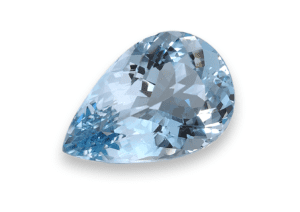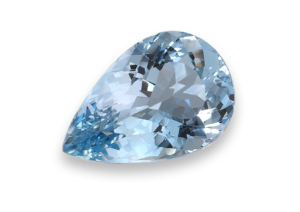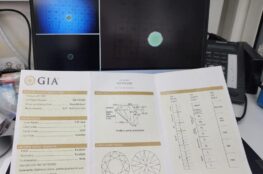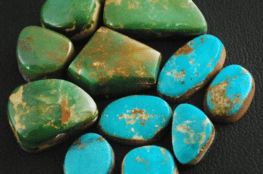Introduction to the Aquamarine Gemstone
Aquamarine, a precious gemstone celebrated for its spellbinding blue hues, is a true treasure of the sea. As a member of the beryl family, aquamarine’s name originates from Latin, with “aqua” meaning “water,” and “marina” meaning “of the sea.” This gemstone is synonymous with the tranquil blue of the ocean.

The Alluring Color Spectrum of Aquamarine
Aquamarine boasts a spectrum of colors, ranging from bluish-green, green-blue, slightly greenish-blue, to rich blue. The intensity of these colors can vary from pale to moderately deep. The gem owes its magnificent coloring to trace amounts of iron.
Aquamarine color is a key factor that captivates gem enthusiasts. However, it’s rare to find aquamarines darker than Swiss blue topaz. When they are, the depth is often a result of the cut.
Be vigilant with gemstones marketed as “white aquamarines.” These are likely colorless beryls, commonly referred to as goshenites.

Inclusions: The Hidden World within Aquamarine
Aquamarines are characterized by elongated, hollow tubes and may possess transparent and metallic inclusions. Some specimens contain “snow-stars,” which are irregular liquid droplets arranged in a star pattern. The Martha Rocha aquamarine is renowned for its “snow-star” inclusions.

Aquamarine Sourcing and Nomenclature
Aquamarine sourcing is diverse. However, be cautious with labels such as “Brazilian” or “Madagascar,” as these may refer to the color rather than the origin. “Santa Maria” aquamarines are named after the Santa Maria de Itabira mine, but similar colored stones have been discovered elsewhere.
Aquamarine Pricing and Market Trends
Aquamarine pricing is influenced by size, depth, purity of color, and clarity. Larger gems do not necessarily command a higher price per carat. In fact, very large aquamarines may be priced lower per carat compared to smallergems of equivalent quality. However, setting and wearing large stones can be challenging, resulting in diminished demand.
Caring for Your Aquamarine Jewelry
Aquamarines are robust but require care to prevent chipping and fracturing. Designs with cut corners and protective settings offer added protection. However, inclusions in aquamarines may be sensitive to mechanical cleaning methods such as ultrasound or steam, heightening the risk of fracturing. It is prudent to consult a gemologist regarding cleaning procedures or to employ a gentle brush, mild soap, and lukewarm water for cleaning.
Conclusion: The Timeless Elegance of Aquamarine
Aquamarine, with its serene hues reminiscent of the ocean, is a gemstone that exudes timeless elegance. Whether you are a collector, looking for the perfect piece of aquamarine jewelry, or interested in the lore and symbolism of gemstones, aquamarine is a gem that captures hearts and imaginations.


